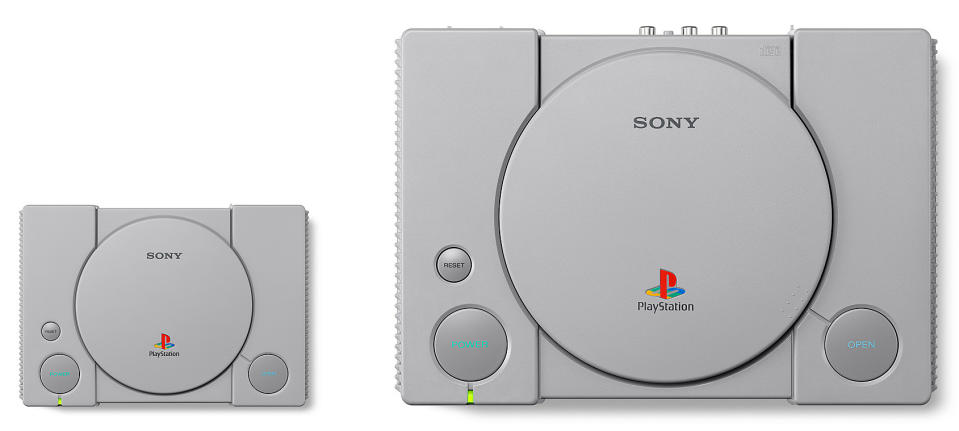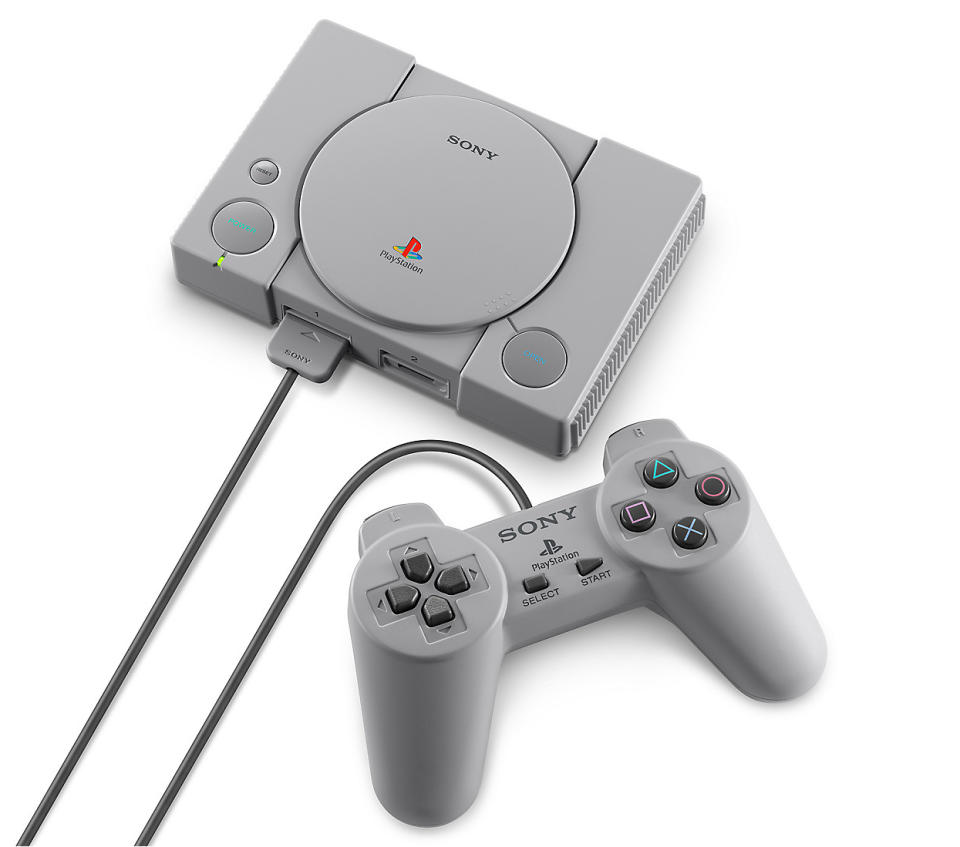Sony PlayStation Classic review: Retro with some trade-offs
Retro consoles are all the rage. Nintendo (NTDOY) kicked off gamers’ new-found love for their favorite systems and titles with the release of the NES Classic in 2016 for $59. The console sold out almost immediately and led to a backlash from gamers who wanted to dig into some sweet 8-bit gaming action. Then came the Super NES Classic for $79.
And now Sony (SNE) is getting in on the nostalgia craze with its new PlayStation Classic. The pint-size version of one of the best-selling consoles of all time comes packed with 20 titles and two controllers — and it’s sure to scratch that itch for gamers looking to play the PS One games they grew up on.
But some conspicuously absent titles in this package will leave some gamers scratching their heads, and a $99 starting price might turn off others.
Honey I shrunk the … Oh, you get it.
Like the NES Classic and SNES Classic, the PlayStation Classic is a faithful, though far smaller, reproduction of the original PS One — down to the button placement and memory card slots. Remember those?
It’s a small addition, but it really helped bring me back to playing games in my room while listening to Limp Bizkit and Korn on my stereo. I’m not quite as thankful that it reminded me of my terrible taste in music when I was a teenager, but still.
The size of the system is really something you need to see to fully appreciate. My wife and I purchased an original PlayStation a few months ago to play a handful of games she grew up on, and when I pulled the PlayStation Classic out of its box, I was stunned at how small it was. Next to the original PlayStation, the PlayStation Classic is absolutely tiny.
The original PlayStation had three physical buttons: one to turn the system on, one to reset the console and one to open the disc tray. The power on the Classic, naturally, still turns the console on and off, but the reset button now lets you exit games and create a save point.

The open button, meanwhile, is used when you need to change virtual discs for games. Before, when you played an epic-length PlayStation game, you had to physically change discs when you reached a certain point to continue your adventure.
Around back, there’s an HDMI port, so you can connect your system to a modern flat-screen TV, something you need a converter to do with the original PlayStation, and a micro USB slot for a power cable. Surprisingly, Sony didn’t include a power brick — instead, the company suggests using a small 5-volt USB adapter. I just used the one from my iPhone. Still, for $99, I would have expected the company to include the adapter. It just seems like an unnecessary inconvenience.
Sony also includes two classic controllers, not the Dual Analog controllers with joysticks the company released later in the PlayStation’s lifecycle. The controllers are faithful recreations, though they connect to the PlayStation Classic via the system’s new USB ports rather than the old-fashioned controller ports on the original console.
Let’s game
So what’s it like to play the PlayStation Classic? Well, on startup you get that same Sony Computer Entertainment logo and sound you’d hear when you powered on your old-school PlayStation. From there, you’re met with a carousel of the system’s 20 built-in games. Like the NES Classic and SNES Classic, the PlayStation Classic’s offerings are permanent, which means you can’t download additional games to the console. It’s these 20 and that’s it.
The menu screen, though, doesn’t have the same charm as the NES or SNES Classic. You get your carousel of games, as well as a settings menu that’s mostly for setting up a screen saver and managing power options. Meanwhile, you have to look up game guides on a separate, internet-connected device.
Nintendo on the other hand gave you options like the ability to adjust your games to appear as though you were playing them on an old, bulky CRT TV, which was a nice addition and helped smooth over some of the games’ rough graphical edges. You don’t get that with the PlayStation Classic, though.
The games, however, are a wonderful collection of some of the best Sony’s PlayStation had to offer. My wife is a huge “Tekken 3” fan — it’s why we bought the original PlayStation — and getting to unlock all of the characters again has been a blast. Likewise, the chance to dive back into generation-defining titles like “Final Fantasy VII” and “Metal Gear Solid” is a total joy.

There are, however, some big gaps in the PlayStation Classic’s small library. The fact that there are no “Crash Bandicoot,” “Spyro The Dragon” or “Tony Hawk Pro Skater” games on the Classic is practically a crime. In fact, anyone I mentioned the Classic to immediately asked whether those titles were included, and were left disappointed when I explained they weren’t.
It’s worth noting that Sony recently released fully updated versions of both “Crash Bandicoot” and “Spyro” with drastically improved graphics, but that shouldn’t have kept them off the Classic.
I obviously understand that choosing 20 games to represent the PlayStation One from Sony’s massive catalogue is a Herculean undertaking, and there are sure to be people who would disagree with whatever the company chose — but those three titles alone would have made the Classic a no-brainer buy for me.
Should you get it?
The PlayStation Classic is a cute, retro system that is sure to warm even the coldest of gamer hearts this winter with everything from its design to its game collection. But there are some trade-offs here. The decision to exclude a power brick from the box is a ridiculous inconvenience, but not a deal-breaker by any means.
The fact that “Crash” and “Spyro” aren’t included, though, may turn off some gamers who were thinking of picking up a Classic this holiday season. At $99, the Classic isn’t exactly inexpensive, either. You can still buy an original PlayStation and a handful of games for about $50 on eBay. However, there’s always the chance that a 20-year-old system will conk out on you at any moment.
If you love the games included in the PlayStation Classic and simply want to relive them on your big-screen HDTV, then this retro machine is definitely worth the buy.
Now if you’ll excuse me, I’m going to play “Grand Theft Auto” and listen to some Korn.
More from Dan:
Email Daniel Howley at [email protected]; follow him on Twitter at @DanielHowley. Follow Yahoo Finance on Facebook, Twitter, Instagram, and LinkedIn.
